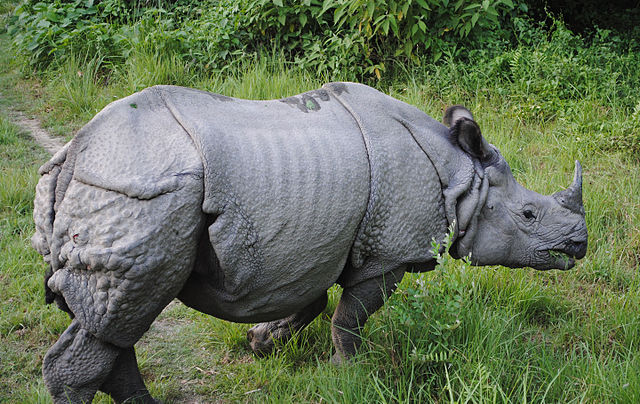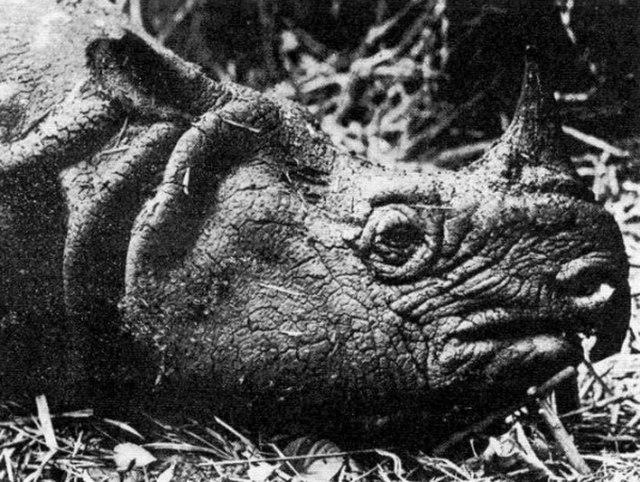Sinotherium is an extinct genus of single-horned elasmotheriine rhinocerotids that lived from the late Miocene to Early Pliocene. It was ancestral to Elasmotherium, demonstrating a very important evolutionary transition from nasal-horned elasmotheriines to frontal-horned elasmotheriines. Its fossils have been found in the Karabulak Formation of Kazakhstan, lower jaw and teeth have been found in Mongolia, and a partial skull is known from the upper part of the Liushu Formation of western China.
Sinotherium diverged from the ancestral genus, Iranotherium, first found in Iran, during the early Pliocene. Some experts prefer to lump Sinotherium, and Iranotherium into Elasmotherium.
Sinotherium
A rhinoceros, commonly abbreviated to rhino, is a member of any of the five extant species of odd-toed ungulates in the family Rhinocerotidae; it can also refer to a member of any of the extinct species of the superfamily Rhinocerotoidea. Two of the extant species are native to Africa, and three to South and Southeast Asia.
The white rhinoceros is actually grey.
The black rhinoceros has a beak shaped lip and is similar in color to the white rhinoceros.
The Indian rhinoceros has a single horn.
Smaller in size than the Indian rhinoceros, the Javan rhinoceros also has a single horn.





